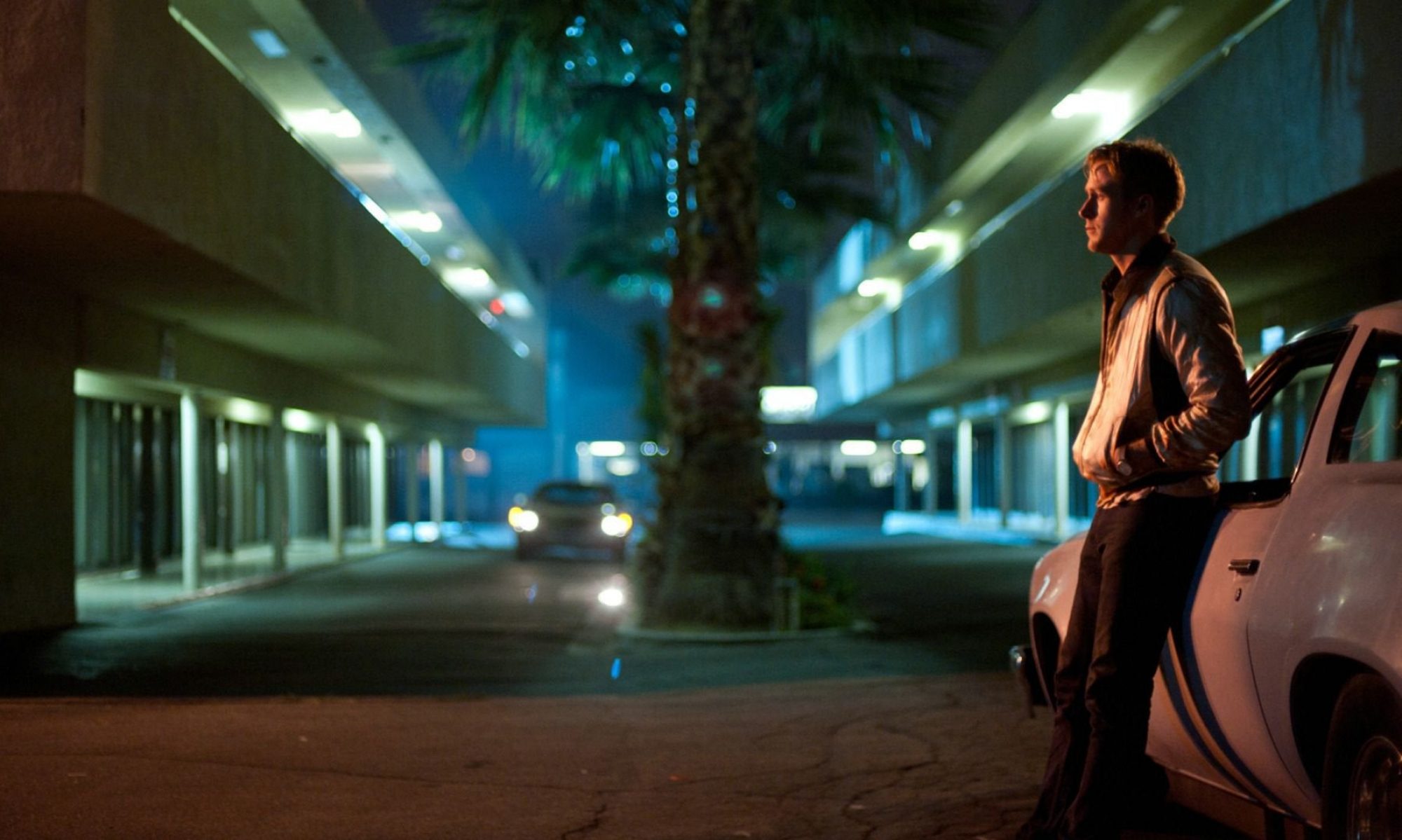‘Airport’.
If you look at the promotional poster or the DVD release of You Were Never Really Here, one of the main quotes you’ll probably notice is from The Times, describing the work as ‘Taxi Driver for a new century’. While there’s some truth of similarities in the basic plot (a disturbed Vietnam veteran tries to save a girl from prostitution using increasingly violent means), Lynne Ramsay’s work provides a drastically different aesthetic approach in terms of editing, aesthetic and particularly characterisation. Our introduction to the monolithic Joe (Juaquin Phoenix) in the film’s first scenes is an effective example; no grand monologue about the state of the city is mentioned, and only a single intelligible diegetic word is spoken.
Before we’re graced with the film’s opening image, we’re met with a barrage of presently unlocatable sounds. The first sounds like a train. Others sound like mechanical ringing, a ringing which gets progressively louder to the point of excruciation. Whispers begin to be heard, uttering descending numbers. A man’s voice mixes with that of a younger boy, both counting down. All of this takes place without having a picture with which to link these unsettling noises. By the time the image appears, the unnerving atmosphere is complemented with an equally upsetting image of Joe’s self-asphyxiation before cutting to an image of an unspeaking child, while the words ‘I must do better, sir’ are heard in nondiegetic form over this static image. The camera returns to Joe briefly before cutting to an obscured photo of an unknown girl as it burns.
There are a number of different, more expository ways to depict these images of abuse, first among them, expository dialogue. By robbing us of this most common narrative form, Ramsay forces the audience to focus and piece meaning together from minimal details. Unlike Travis Bickle’s grand monologue about the scum of New York city, we are encouraged here to decipher Joe through actions rather than words. We watch him put the burnt photo in the bin, remove a plastic bag from a fire alarm, and we see Joe meticulously cleaning a hammer. Except we don’t see Joe. Not fully, anyway. We just see his torso performing the actions, not his head or legs. This ‘cutting’ frame shot has been used frequently throughout Ramsay’s work to suggest the fragmented internal mindset of her characters.
Next, we watch Joe flush a bloody tissue down the toilet and put a series of items, including a necklace – one that would appear to be of some significance due to the amount of time the camera lingers on it. Yet all these objects are swiftly placed in a plastic bag with no further explanation. The camera cuts to Joe’s door with a ‘Do Not Disturb’ sign; the door opens slightly, but nobody leaves. When Joe exits the room, Johnny Greenwood’s ‘Sandy’s Necklace’ starts to play as Joe dumps the bag in a bin. As the song (titled after an object whose context we never learn anything about) continues, the camera swerves into point-of view shot as it sneaks down hotel corridors, stopping and retreating at reception when police lights are seen outside the windows. At last, we finally see the back of Joe’s head, but even this is hooded. So far, the camera has been at pains not to show us the film’s central character.
Our first glimpse of Joe is obscured in silhouette as he walks outside under shadow of night. As he lumbers through an alleyway and is suddenly attacked by an unknown assailant, you’d expect some sort of dialogue, or at least a grunt. But Joe seems to expect this onslaught, weathering the attacker’s weapon with barely a flinch before taking him down with not much more thana single, brutal headbutt. Staring at his defeated adversary briefly before turning in the other direction and walking left of the camera as the techno beats of Greenwood’s ‘Dark Streets’ begin, we just witness Joe’s hand on a door before we hear him utter his first word of the film: ‘Airport’. We don’t see his face saying these words, we don’t see him talking to the taxi driver, we just hear the one word. Just after this, we see a close-up of the door that the unseen Joe has just shut, which reads: ‘Cab Cincinnati’. We could have had a monologue from Joe mentioning the location of the film in the work we’re about to watch, but that would’ve been expository. And where’s the fun in that? We finally see the paranoid, bearded face of Joe within the vehicle. A young De Niro this ain’t. We can hear the driver singing a song, and the camera then cuts to the driver singing said song. Joe listens silently, but the sound of the song suddenly cuts out, and the subsequent image of the driver show his lips mouthing the film’s title alongside the titles that appear and disappear in a similarly ominous form to the title sequence of Ramsay’s We Need To Talk About Kevin. After this short, dream-like moment, the driver’s song returns, and Joe continues to stare listlessly into the distance. We don’t know what’s happened, and Ramsay doesn’t stop to explain. Sound, imagery and a lack of dialogue are employed to put the audience in a position of subordination. Nothing is quite clear yet, and these techniques of negation place us right outside our comfort zone. It’s almost like we were never really here, eh?
